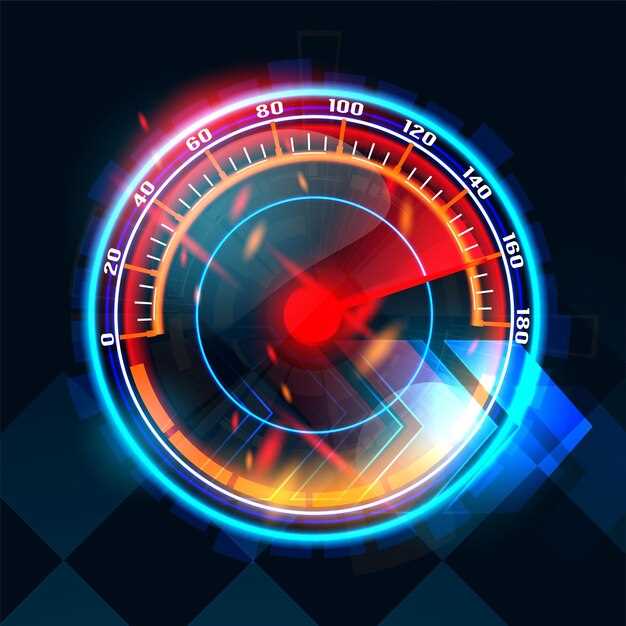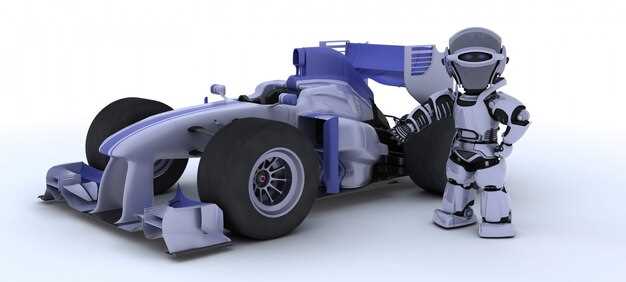
In the quest for automotive excellence, both enthusiasts and casual drivers alike often seek to improve their vehicle’s overall performance. Among the various performance upgrades available, modifications aimed at enhancing acceleration and speed stand out due to their immediate and tangible effects. Whether you own a sports car or a daily driver, optimizing these aspects can significantly elevate your driving experience.
Numerous aftermarket components can be integrated into your vehicle to achieve this goal. From exhaust systems to engine tuning, each modification plays a crucial role in enhancing your car’s responsiveness and speed capabilities. In this article, we will explore the top mods that not only maximize acceleration but also improve speed performance, providing you with insights into how each option can transform your driving dynamics.
Understanding the right modifications for your vehicle can be a game changer. With the right blend of mechanical enhancements and tuning, you can achieve an exhilarating performance that not only meets but exceeds your expectations. Get ready to dive into the world of automotive tuning as we highlight the must-have mods that will take your acceleration and speed to the next level.
Upgrading ECU for Optimal Power Delivery

Upgrading the Engine Control Unit (ECU) is a vital step in maximizing a vehicle’s performance potential. The ECU plays a critical role by managing various engine parameters, including fuel injection, ignition timing, and air-fuel ratio. By reprogramming or replacing the ECU, enthusiasts can optimize these parameters for improved power delivery and overall efficiency.
A custom ECU tune allows drivers to tailor the engine’s response to specific setups and driving styles. This means effectively adjusting how the engine responds under various conditions, which can lead to increased horsepower and torque. The benefits extend to throttle response, which can be sharpened to provide a more exhilarating driving experience.
When upgrading the ECU, it is essential to consider the compatibility with other performance modifications, such as aftermarket intakes and exhaust systems. A well-matched ECU tune can leverage these modifications to produce a balanced and powerful performance enhancement.
Moreover, modern ECU tuning solutions often include features such as adjustable maps for different fuel types, allowing drivers to switch between performance and fuel-saving modes. This adaptability can be beneficial for daily driving while still providing the option for high-performance scenarios.
Another advantage of upgrading the ECU is the ability to eliminate factory-installed limits, such as speed limiters and engine rev limits. By removing these constraints, drivers can fully experience the capabilities of their modified vehicles.
All tuning processes should be approached carefully, as improper adjustments can lead to engine damage or inefficiency. Therefore, it is advisable to consult with professional tuners or utilize reputable tuning software that has been tested and proven in the automotive community.
In conclusion, upgrading the ECU is a potent modification for enhancing acceleration and speed performance. By ensuring optimal power delivery through tailored adjustments, drivers can significantly improve their vehicle’s capabilities on the road or track.
Choosing the Right Aftermarket Turbocharger for Increased Boost
Selecting the right aftermarket turbocharger is crucial for enhancing your vehicle’s performance. The correct turbocharger can significantly increase horsepower and torque, improving overall acceleration and speed. Here’s a detailed guide to help you make an informed choice.
When considering an aftermarket turbocharger, pay attention to the following factors:
- Turbo Size:
The size of the turbocharger impacts its efficiency and performance characteristics. Larger turbos can produce more boost, but they may cause lag. A smaller turbo may increase response time but could limit the overall power at higher RPMs.
- Type of Turbocharger:
There are various types of turbochargers, such as twin-scroll, variable geometry, and hybrid turbos. Each type has its advantages:
- Twin-scroll: Improved spooling times and reduced turbo lag.
- Variable geometry: Offers better efficiency across a range of RPMs.
- Hybrid: Combines features from different turbo designs for increased performance.
- Boost Pressure:
Determine the desired level of boost pressure based on your engine’s specifications. Ensure your engine and fuel system can handle the increased stress and that you have adequate tuning capabilities.
- Material Quality:
High-quality materials can enhance durability and performance. Look for turbochargers made from forged aluminum, stainless steel, or other strong alloys that can withstand high temperatures and pressures.
- Brand Reputation:
Choose well-known brands with a track record of reliability and performance. Research customer reviews and performance benchmarks to evaluate their products.
- Installation Requirements:
Consider whether the turbocharger kit includes all necessary components for installation (e.g., gaskets, lines, and mounting hardware). If professional installation is necessary, factor in the additional costs.
After selecting a turbocharger, proper tuning is essential to ensure the engine runs efficiently and reliably. Pay attention to the following components:
- Fuel System: Upgrading injectors and fuel pumps may be necessary to support the increased fuel demand.
- Engine Management System: A reliable tuning system is vital for optimizing air-fuel ratios and ignition timing to maximize performance.
- Intercooling: Upgrading to a larger intercooler can help manage intake temperatures, resulting in better performance and reliability.
In summary, carefully evaluate the size, type, boost pressure, material quality, brand reputation, and installation requirements to select the right aftermarket turbocharger. Combine it with appropriate tuning and supporting modifications for maximized performance gains.
Lightweight Performance Parts: Reducing Weight for Better Speed

Reducing vehicle weight is a crucial factor in enhancing speed and acceleration. When a car is lighter, it requires less power to move, allowing for quicker acceleration and improved handling. Lightweight performance parts play a significant role in achieving this. Various components can be replaced with lighter alternatives, resulting in substantial weight savings without sacrificing reliability.
One of the most effective upgrades is the use of carbon fiber components. Carbon fiber is known for its high strength-to-weight ratio, making it an ideal material for various parts such as hoods, roofs, and body panels. Replacing heavy steel or aluminum parts with carbon fiber can dramatically reduce overall vehicle weight.
Another effective option is to consider lightweight wheels. Traditional alloy wheels can be replaced with forged aluminum or magnesium wheels, which are significantly lighter and can enhance acceleration and braking performance. Additionally, they improve the vehicle’s unsprung weight, contributing to better handling dynamics.
Upgrading to a lightweight exhaust system can also yield notable performance improvements. Factory exhaust systems are often heavy and restrictive. By opting for a lightweight performance exhaust made from high-quality materials such as titanium or stainless steel, the overall weight is reduced, while enhancing exhaust flow, resulting in increased power and acceleration.
Furthermore, replacing stock seats with racing or lightweight aftermarket seats can contribute to weight reduction. Stock seats are often heavier due to added features and comfort materials. Lightweight racing seats, designed for performance, can save significant weight without compromising safety.
In conclusion, equipping your vehicle with lightweight performance parts is an effective strategy for improving speed and acceleration. Each component replacement contributes not only to a reduction in weight but also to enhanced handling and agility, transforming the driving experience into one that is more exhilarating and responsive.





